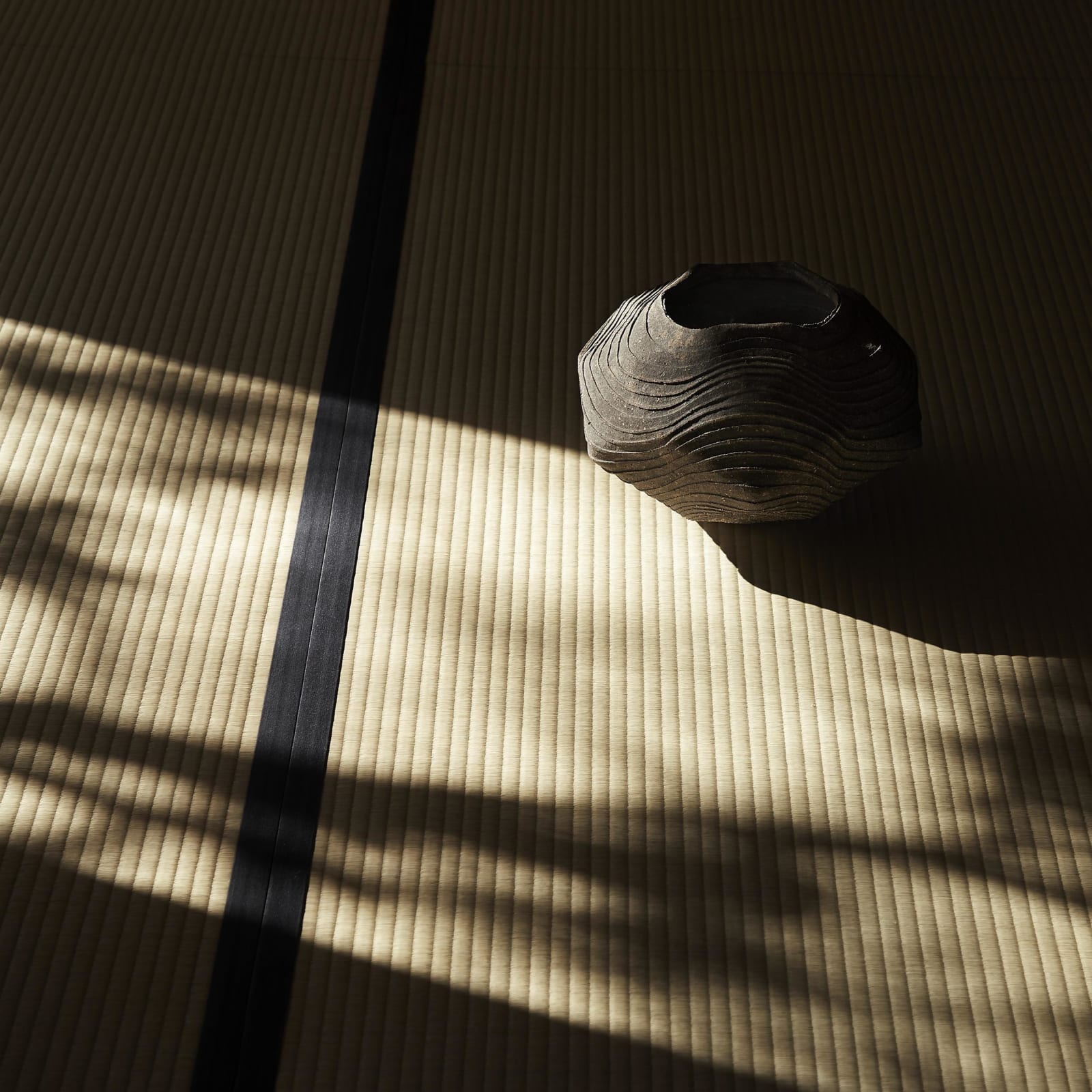Kamoda Shōji (1933−1983)
Vase with Pattern of Waves
Incised “Sho” on foot
Double boxed
W34.5 x H22 cm
Further images
Exhibitions
Kamoda Shoji sakuto ten. Tokyo: Nihonbashi Takashimaya, 1970.Literature
Works of Shoji KAMODA. Tokyo: Kodansha, 2005.
Continuous curves sweep all around the faces of a polyhedron. Kamoda Shoji’s works of this style were only found at Takashimaya Nihonbashi store exhibition in March, 1970, and they were no more produced since then. The body is formed by coiling up ropes of clay, engraved with parallel curves on the surface, and followed by biscuit firing. Afterwards, a different kind of clay is applied to the surface before processed in a high temperature firing. The outer clay is then scratched away to reveal a lower layer of a contrasting ground, which achieves both the matured clay and a soft earthenware-like texture. Such a distinctive technique by Kamoda creates a particularly unique atmosphere.
“Old or boring things ought to either fade out or regenerate. It is inevitable. There is no boring work,” said Kamoda, who is never fed up with trying his hand at new challenges. Just as this statement by himself, after a new kiln was built in Tono, Iwate Prefecture, in 1969, his style was remarkably changing in the following a few years. His attempts on yakishime, or unglazed high firing, are never seen after the year of 1970. The present work is a result of his ceaseless effort in pursuit of the ultimate stage of yakishime in his early thirties, as well as a signature piece that should be marked in the history of modern ceramic art.
Kamoda Shoji (ceramist; 1933−1983)
Osaka-born ceramist. Graduated from Kyoto Municipal College of Art. Studied under Tomimoto Kenkichi and Kondo Yuzo. Started his artistic career after working at a pottery. Built a new kiln in Tono, Iwate Prefecture, in 1969, where he attempted to break away from tradition and to create his own aesthetics. Received the Ministry of Education Award for Fine Arts and the Tenth Takamura Kotaro prize.
“Old or boring things ought to either fade out or regenerate. It is inevitable. There is no boring work,” said Kamoda, who is never fed up with trying his hand at new challenges. Just as this statement by himself, after a new kiln was built in Tono, Iwate Prefecture, in 1969, his style was remarkably changing in the following a few years. His attempts on yakishime, or unglazed high firing, are never seen after the year of 1970. The present work is a result of his ceaseless effort in pursuit of the ultimate stage of yakishime in his early thirties, as well as a signature piece that should be marked in the history of modern ceramic art.
Kamoda Shoji (ceramist; 1933−1983)
Osaka-born ceramist. Graduated from Kyoto Municipal College of Art. Studied under Tomimoto Kenkichi and Kondo Yuzo. Started his artistic career after working at a pottery. Built a new kiln in Tono, Iwate Prefecture, in 1969, where he attempted to break away from tradition and to create his own aesthetics. Received the Ministry of Education Award for Fine Arts and the Tenth Takamura Kotaro prize.





